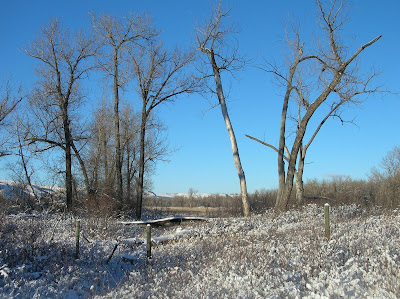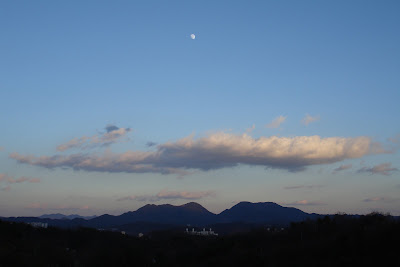



Finished traveling, started... something.
 This is the English Only Zone, also know as the EZ zone (though clearly redundant). We teach in the building on the left, and we all live in the dormitories on the right. One building for the girls, and one for the boys. I've probably mentioned before that I live in the girls dormitory. As you might imagine, this is some sort of dream come true. You can also see our cafeteria in the foreground. I live, eat, and work in this small area. There is no real reason to leave.
This is the English Only Zone, also know as the EZ zone (though clearly redundant). We teach in the building on the left, and we all live in the dormitories on the right. One building for the girls, and one for the boys. I've probably mentioned before that I live in the girls dormitory. As you might imagine, this is some sort of dream come true. You can also see our cafeteria in the foreground. I live, eat, and work in this small area. There is no real reason to leave. Sometimes I do leave for a bike ride though, as I did on Sunday. This is an old section of residential Jinju that is packed into a valley away from the river.
Sometimes I do leave for a bike ride though, as I did on Sunday. This is an old section of residential Jinju that is packed into a valley away from the river. The power distribution in that area seems to have been inspired by some of the Indian cities I've visited.
The power distribution in that area seems to have been inspired by some of the Indian cities I've visited. This is obviously a bad picture, but I took it to illustrate an interesting phenomenon that might be unique to Korea. This appears to be a village. There are no other buildings withing five kilometers. Is that where the farmers that tend to those green houses live?
This is obviously a bad picture, but I took it to illustrate an interesting phenomenon that might be unique to Korea. This appears to be a village. There are no other buildings withing five kilometers. Is that where the farmers that tend to those green houses live? Anyway, you really have to see these blocks of apartment complexes to believe it. In bigger cities there are countless areas that contain thirty or forty absolutely identical highrise apartments. These buildings are all cookie cutter copies of each other, and they are built simultaneously! The only difference between them are the giant numbers that are painted on each one to help you distinguish between them. 101, 102, 103... I imagine that Hyundai and Samsung have apartment catalogues containing five or six apartment models for local governments to choose from. Imagine how cheap they are to build compared to an independently designed and contracted apartment building. If I were so bold to pull a number out of the air, I would say that they can build them for half the cost. No need to pay for independent architectural and engineering work on every building - and I guarantee you that the boys building the apartments above have built 50 others just like them. They probably come with a manual. Step 1....
Anyway, you really have to see these blocks of apartment complexes to believe it. In bigger cities there are countless areas that contain thirty or forty absolutely identical highrise apartments. These buildings are all cookie cutter copies of each other, and they are built simultaneously! The only difference between them are the giant numbers that are painted on each one to help you distinguish between them. 101, 102, 103... I imagine that Hyundai and Samsung have apartment catalogues containing five or six apartment models for local governments to choose from. Imagine how cheap they are to build compared to an independently designed and contracted apartment building. If I were so bold to pull a number out of the air, I would say that they can build them for half the cost. No need to pay for independent architectural and engineering work on every building - and I guarantee you that the boys building the apartments above have built 50 others just like them. They probably come with a manual. Step 1.... This picture also captures something interesting about Korea. This is a section of the world map that is displayed in front of the EZ building. You will notice that an area of the map above was cut out and replaced. The name "Sea of Japan" was removed and replaced with "East Sea". This is related to sentiments over Japan's former occupation/colonization. Many people feel that the body of water separating the Corean Penninsula and Japan should have a neutral name... though there are also quite a few Coreans who think that it should just be called "Sea of Corea".
This picture also captures something interesting about Korea. This is a section of the world map that is displayed in front of the EZ building. You will notice that an area of the map above was cut out and replaced. The name "Sea of Japan" was removed and replaced with "East Sea". This is related to sentiments over Japan's former occupation/colonization. Many people feel that the body of water separating the Corean Penninsula and Japan should have a neutral name... though there are also quite a few Coreans who think that it should just be called "Sea of Corea". This is a pretty average scene from the countryside in this area. Tree covered hills and well farmed valley floors spotted with farmer's houses, green houses, and little family temples.
This is a pretty average scene from the countryside in this area. Tree covered hills and well farmed valley floors spotted with farmer's houses, green houses, and little family temples. And finally, you should all know that someday I will live in a house that looks something like this one. That or a Chinese style courtyard home.
And finally, you should all know that someday I will live in a house that looks something like this one. That or a Chinese style courtyard home.